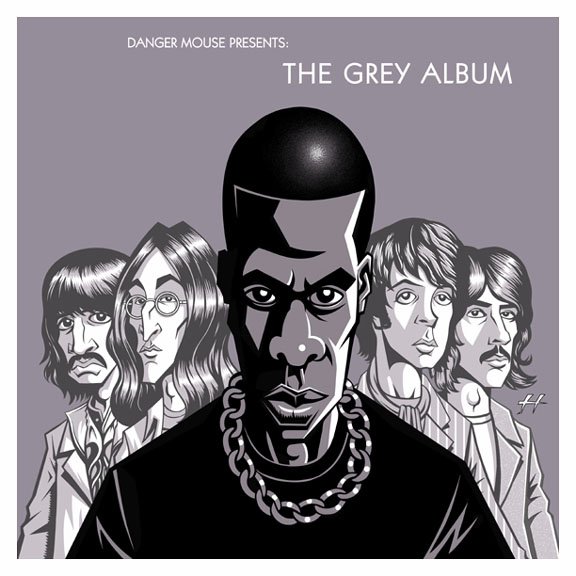(editorial note: i didn’t intend for this to be multiple parts, but when my introduction to what i was going to actually blog about became 5 long paragraphs, i thought it might be a good idea to chop this thing up. this first post will set the stage for the second post, which will more adequately fulfill the promise of the post title, good copy bad copy and the great confession.)

a couple weeks ago, an artist who calls himself girl talk (gregg gillis) came onto my radar. since the time of that discovery, i’ve been listening to his latest album, feed the animals, nonstop. many of you probably have no clue who he is, so let me describe the concept of his music. in essence, it’s an album with nothing but samples. in other words, of the 14 tracks on the album, there is absolutely zero original music. every bit of it is an amalgamation of precisely 322 samples. (if you want to see the liner notes where he credits the sampled artists click here. if you want to see a more readable list of the samples, click here. if you want to see a user-compiled list on wikipedia that includes time references to each sample, click here.)
to paint a picture,
it could be described as really creative and forward-thinking cheerleader mix music. (please forgive me gregg gillis if you ever read this…) that really dumbs it down, but it gives you an idea of the sound why don’t you just listen to a track. it’s hard to pick one (because this was all created as one long track and then chopped into individual songs), but here’s a particularly good one called
what it’s all about (which contains samples of phil collins’
in the air tonight, the cure’s
close to me, faith no more’s
epic, paula cole’s
i don’t wanna wait, wu-tang clan’s
c.r.e.a.m., and vanilla ice’s
havin’ a roni, to name just a very, very few).
coincidentally, a few days later, a production unit called minty beats released their new mash-up called
jaydiohead. as you might be able to guess, it’s jay-z meets radiohead. they, much like others producers doing this kind of thing, released it for free on a makeshift website they threw up, which you can find
here. a lot of these producers who are following in the footsteps of danger mouse (who i’ll get o in a minute) assume that this is just a small undertaking and are putting out some real crap.
jaydiohead is not one of these crappy projects. it’s really good. i think the key, beyond production quality, is finding two artist that fit together, but yet are still a little ironic to make it interesting. jay-z and radiohead is just that. it just fits. go download it and you can hear it for yourself.

as referenced,
danger mouse (of recent
gnarls barkley fame) is really the artist who kicked off this whole thing and serves as the inspiration for artists like girl talk and minty beats (and many others). in 2004, as an art project of sorts, he decided to mash-up jay-z’s
black album (lyrics) with the beatles’
white album (music). within a matter of weeks, hundreds of thousands of people downloaded it and it put danger mouse on the map as a producer. it was an incredible musical experience and showed everyone that “repurposed” music was an artform all to itself that is a valuable contribution to music culture.
with the grey album, a music industry firestorm was set off regarding issues of copyright, specifically in terms of repurposing/sampling of music and peer-to-peer file sharing. grey was solely formed from those two albums (no original music) and while it was never sold, it was shared in mass via such networks as limewire, kazaa and bit torrent. emi, who owns the rights to the beatles catalogue, very famously tried to halt the further distribution of the album. with their injunction, it caused web-based file sharing developers to come together and stage “grey tuesday.” on that day, in spite of emi’s legal threats, this group led the first ever “electronic civil disobedience” and simultaneously posted the album for download for 24 hours. because of this and other complaints, emi retracted their cease-and-desist letter and the album has been able to live on through various websites and peer-to-peer programs.
in my next post, i’ll get into some of the implications of the rise of these types of artists, the shifting (or shifted, however you view it) culture of music consumption and then i’ll fess up to my role in this file sharing conversation. primarily, i’ll be giving my thoughts on a documentary i watched called good copy bad copy that deals with all these very issues. so, check back. i hope to either post part 2 tonight or tomorrow at some point.














